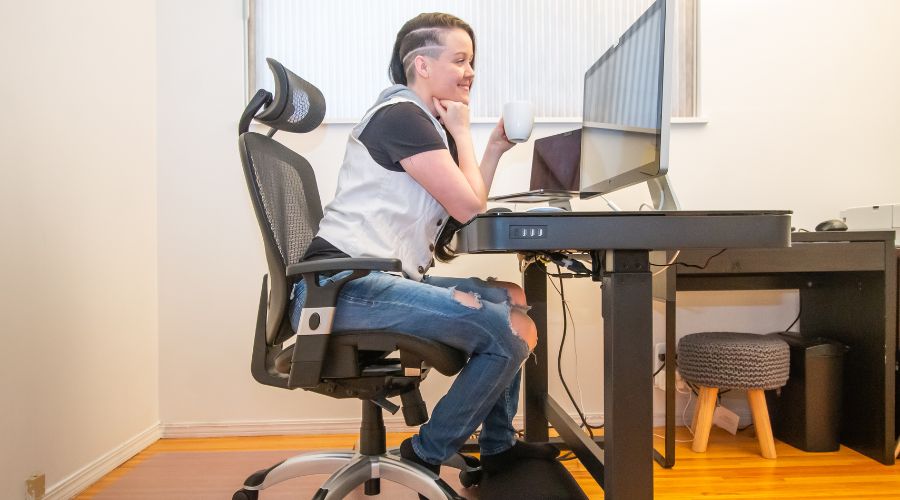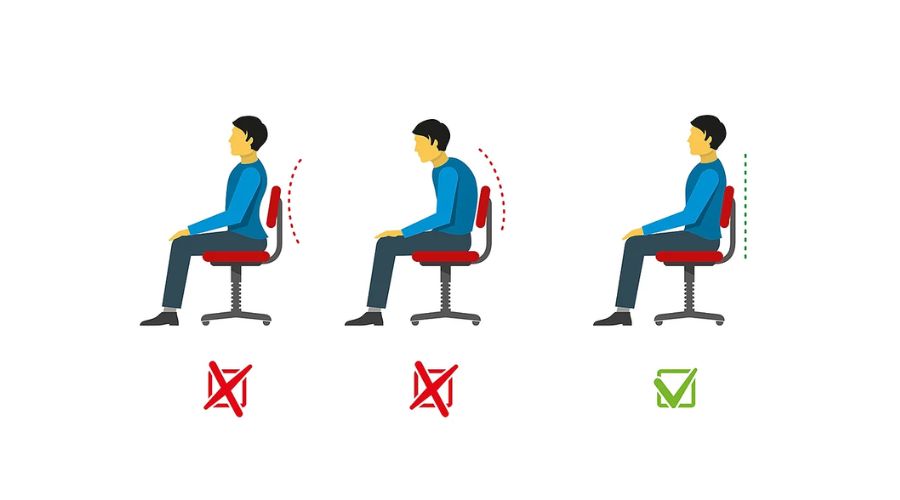It is essential in the modern day, as most of us work longer sitting than we sleep. Ergonomic adjustments for the right sitting posture will contribute to comfort—and as a great bonus, it is healthy and increases productivity.
Here are essential tips to improve how you sit and feel at work.
1. What are the office ergonomic chairs?

- Comfort: Ergonomic chairs have qualitatively good parts and are adjustable in a way possible to fit your body type and prevent problems commonly associated with the spine.
- Increase Chair Height: Sit up to your feet flat and have a 90-degree angle made of thighs and hips. You can raise the height.
- Chair ergonomics – align in your chair for healthier back, long term benefits and increased concentration.
- Browse Chairs: Best Ergonomic Desk Chair Sales to Find the Right Seat for You
2. Tips to Fix Your Office Chair Properly

- Make sure your chair is at the right height that allows you to place both feet flat on the ground
- Especially at the back of the chair, which your spine is inclined to be curved like in nature.
- This will help to ensure that each time you place the shoulders, you are not overused; it is relaxed.
- Do not plan your work and stoop is, set monitor on the eye height.
3. Guidelines for Ideal Seated Position

- SittingPosture —Maintain a straight spine with shoulders relaxed and the monitor at eye level to avoid neck strain. Rest your arms comfortably on the table without pressure or twisting. Ensure your chair supports your back properly to prevent strain.
- Ergonomic Chair: You shall prefer a chair that must (even in some form) supporting your resting lower back and should not allow you to sit by slouching.
- Stretch Progress: Get up and stretch its good to move carry your body flow some blood through it.
- Position: Two little things that make a big difference when you have to sit for hours, after hour of work is good posture and non-sedentary
4. Balanced Workstation Ideas

- Monitor and Desk– Center the top of your monitor at-or-slightly-below pierce eye level.Place Below Your Upper-Torso. 8 to18 inches from face. Your elbows should be at 90° angles to avoid overstretching (if it is uncomfortable standing, must use a sit-stand desk).
- Footrest: If your feet can not be comfortably put on the floor to hold up leg(s) and take pressure off back, use a foot rest.
- Stay On The Move: You should not sit all day and watch as you walk with video calls, it is good for your body and does so as often rests on a regular basis because crouching in front of the monitor harms their neck.
Conclusion:
We can provide you with ergonomic offices solutions. Our expertly designed chairs are built for comfort and productivity, strategically helping you advocate your health in the office We can work with you to almost reprogram important habits into enhanced surrounds … hijacking any workspace — a clear conduit between peak performance AND long-term well-being. www.thepennywize.com
FAQs:
Q1. What is the right way to sit in your office chair?
After 30 and ideally each hour, try to change your sitting positions in order not to feel back pain and help the blood circulation. Change in a little different angles and heights, rotate for about 15 minutes, or walk some distance every hour to avoid your muscles going flaccid.
Q2. What to Consider in Your Ergonomic Office Chair?
Find an office chair that provides an adjustment in seat height, backrest, and armrest to match your body measurements. A good ergonomic chair should be able to support the curve of your spine, your feet comfortably touching the floor, and your arms parallel to the surface of the desk.
Q3. In addition, can sitting at the right place also positively translate into increased productivity as a whole?
An ergonomic chair considerably enhances productivity by prompting good posture and reducing discomfort. A good-quality chair can keep you away from tension and pressure that may build up from sitting in a chair that is less than desirable, which will allow you to be more comfortable and focused longer.



